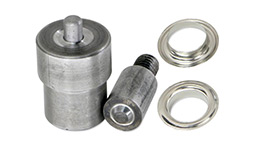
Nov . 14, 2024 10:50
Back to list
electric regulating valve
Understanding Electric Regulating Valves Operation and Applications
Electric regulating valves play a crucial role in modern industrial processes, providing precise control over fluid flow, pressure, and temperature. These devices are essential for maintaining optimal operating conditions in a variety of applications, from water treatment facilities to chemical processing plants. This article delves into the fundamental aspects of electric regulating valves, exploring their operation, benefits, and applications across different sectors.
What is an Electric Regulating Valve?
An electric regulating valve is a mechanical device designed to control the flow of media (liquid or gas) in a system by adjusting the size of the flow passage. Unlike traditional valves, which may require manual adjustment, electric regulating valves are equipped with electric actuators that automatically position the valve based on signals from a central control system. This automation allows for real-time adjustments, ensuring that flow rates remain within specified parameters.
How Do Electric Regulating Valves Work?
The operation of an electric regulating valve revolves around the interaction between the valve body, the actuator, and the control signal. When the control system determines that a change in flow is necessary—due to variations in demand or process requirements—it sends an electrical signal to the actuator. The actuator then responds by moving the valve's plug or disk, thereby changing the position of the valve.
There are two primary types of electric actuators used in regulating valves linear and rotary. Linear actuators provide straight-line motion, making them suitable for valves that require vertical movement (such as globe valves). Rotary actuators, on the other hand, operate through rotational motion, which is ideal for ball or butterfly valves. The choice between these actuators depends on the specific requirements of the application.
Benefits of Electric Regulating Valves
1. Precision Control Electric regulating valves enable highly accurate flow control, which is vital for processes requiring exact fluid measurements. This precision helps in improving product quality and process efficiency.
2. Automation Compatibility As industries increasingly adopt automation and control systems, electric regulating valves integrate seamlessly with these technologies, facilitating smart manufacturing and process optimization.
electric regulating valve

4. Remote Operation With electric actuators, these valves can be controlled remotely, thus allowing operators to manage processes from a safe distance and respond quickly to changing conditions.
5. Reliability and Durability Designed to handle demanding industrial environments, electric regulating valves typically offer high durability and low maintenance requirements, translating to longer service life and reduced downtime.
Applications Across Different Sectors
Electric regulating valves find applications in a wide range of industries
- Water and Wastewater Treatment In municipal water treatment plants, these valves regulate chemical dosing and flow in treatment processes, ensuring safe and efficient water supply.
- Oil and Gas In the oil and gas sector, regulating valves control the flow of crude oil, natural gas, and other media throughout various stages of production and refining.
- Chemical Processing Electric regulating valves are crucial in chemical manufacturing, where they help manage reactions by controlling the flow of raw materials and regulating temperatures.
- HVAC Systems In heating, ventilation, and air conditioning systems, these valves help maintain the desired temperature and airflow, contributing to energy efficiency and comfort in buildings.
- Food and Beverage Processing In food and beverage operations, precision is key. Electric regulating valves ensure that ingredients are mixed in the correct proportions and at the right temperatures.
Conclusion
Electric regulating valves are a vital component in many industrial systems, delivering efficiency, precision, and reliability. Their ability to automate flow control processes makes them indispensable in an era where industries are moving toward increased automation and smarter operational practices. As technology advances, the capability and application of electric regulating valves are likely to expand further, shaping the future of fluid management in various sectors.
Next:
Latest news
-
Safety Valve Spring-Loaded Design Overpressure ProtectionNewsJul.25,2025
-
Precision Voltage Regulator AC5 Accuracy Grade PerformanceNewsJul.25,2025
-
Natural Gas Pressure Regulating Skid Industrial Pipeline ApplicationsNewsJul.25,2025
-
Natural Gas Filter Stainless Steel Mesh Element DesignNewsJul.25,2025
-
Gas Pressure Regulator Valve Direct-Acting Spring-Loaded DesignNewsJul.25,2025
-
Decompression Equipment Multi-Stage Heat Exchange System DesignNewsJul.25,2025

